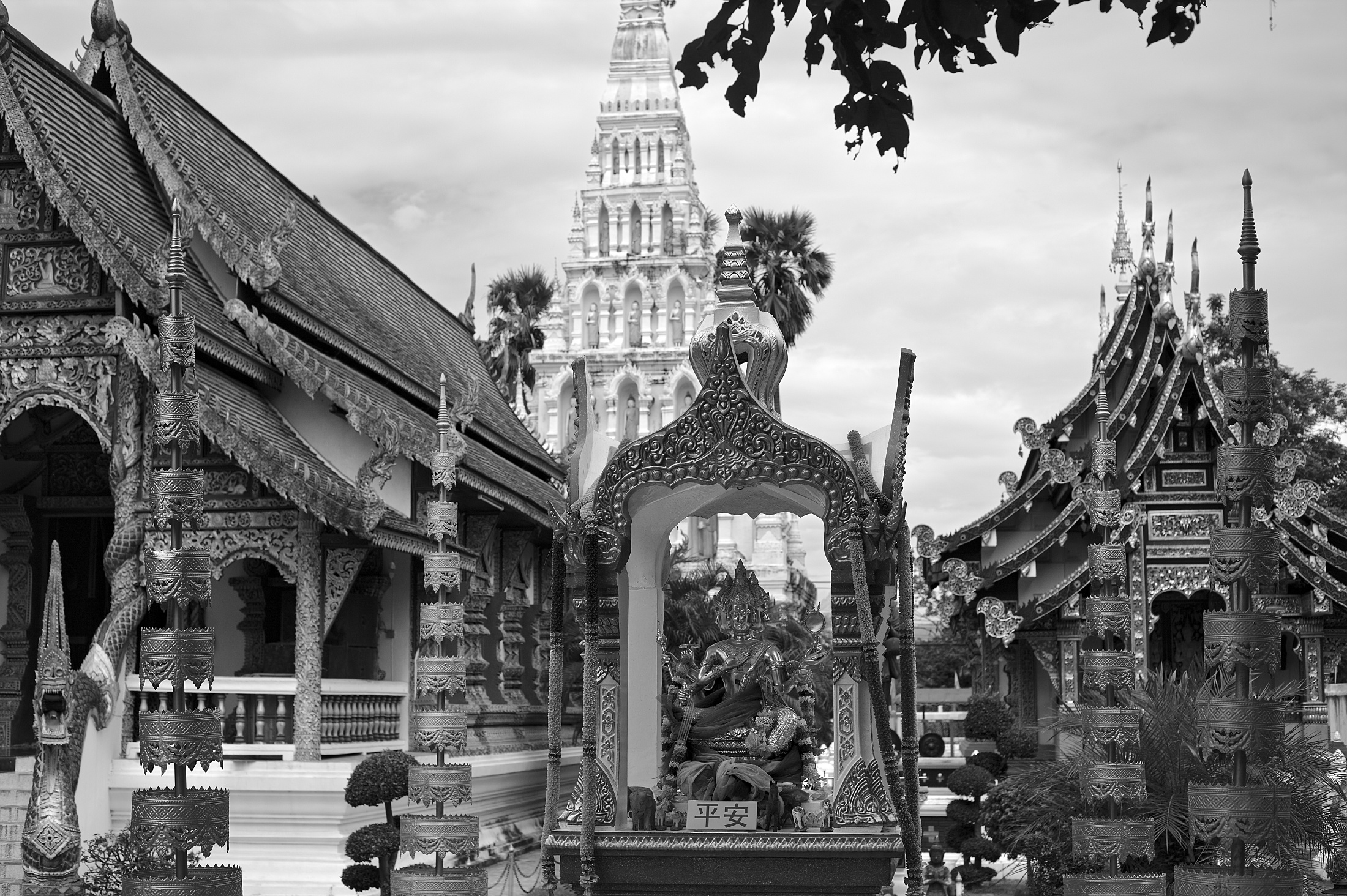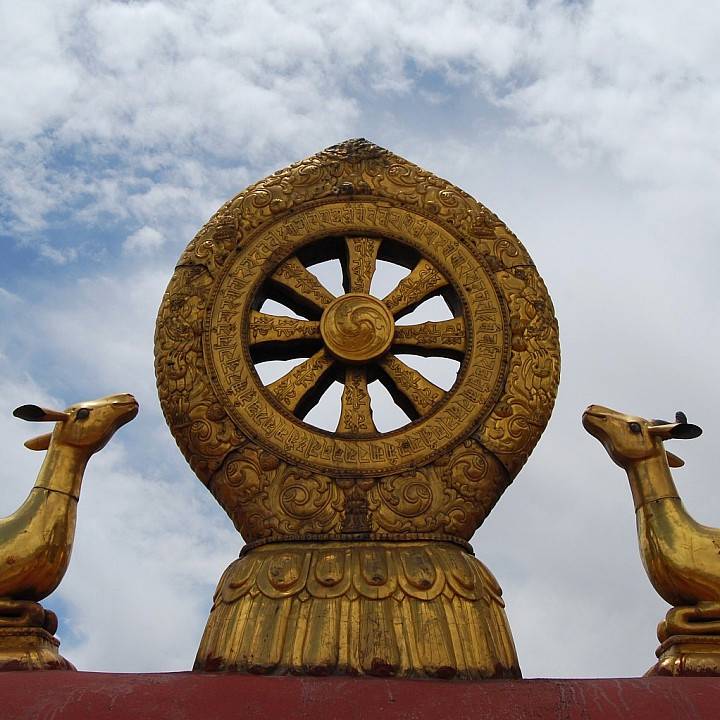|
Asalha Puja
Asalha Puja (also known as Asadha Puja or Asanha Bucha in Thailand, th, อาสาฬหบูชา) is a Theravada Buddhist festival which typically takes place in July, on the full moon of the month of Āsādha. It is celebrated in Indonesia, Cambodia (ពិធីបុណ្យអាសាឡ្ហបូជា), Thailand, Sri Lanka, Laos, Myanmar and in countries with Theravada Buddhist populations. In Indonesia, the festival is centered at Mendut Temple and Borobudur Temple, Central Java. Asalha Puja, also known as Dharma Day, is one of Theravada Buddhism's most important festivals, celebrating as it does the Buddha's first sermon, the "Sermon in the Deer Park" at Sarnath, in which he set out to his five former associates the doctrine that had come to him following his enlightenment. This first pivotal sermon, often referred to as “setting into motion the wheel of dhamma,” is the teaching which is encapsulated for Buddhists in the Four Noble Truths: there is suff ... [...More Info...] [...Related Items...] OR: [Wikipedia] [Google] [Baidu] |
Wat Chedi Liam
Wat Chedi Liam ( th, วัดเจดีย์เหลี่ยม; "Temple of the Squared Pagoda"), formerly known as Wat Ku Kham ( th, วัดกู่คำ; "Temple of the Golden Stupa"), is one of the wats in the ancient Thai city of Wiang Kum Kam, now part of present-day Chiang Mai. History The temple was built c. 1287 and remained in use during the early Lan Na period after the new city of Chiang Mai had been established by King Mangrai the Great. Renovation The current buildings are from a renovation in 1908 CE by a Burmese trader. Because of this many of the decorations of the wat are Burmese in style. For example, all but one of the Buddha images on the chedi are wearing the yellow Burmese colourings rather than the white Thai colours. The chedi was also renovated in 1992 CE when a number of other improvements were made to the site. Not all of these improvements were popular, nor were some needed repairs carried out. Despite its great age the wat is used in ... [...More Info...] [...Related Items...] OR: [Wikipedia] [Google] [Baidu] |
Sarnath
Sarnath (Hindustani pronunciation: aːɾnaːtʰ also referred to as Sarangnath, Isipatana, Rishipattana, Migadaya, or Mrigadava) is a place located northeast of Varanasi, near the confluence of the Ganges and the Varuna rivers in Uttar Pradesh, India. Sarnath is where Gautama Buddha taught Dhammacakkappavattana Sutta, his first sermon after attaining enlightenment, and where the Buddhist ''sangha'' came into existence through the Enlightenment in Buddhism, enlightenment of his first five disciples (Kaundinya, Assaji, Bhaddiya, Vappa and Mahānāman, Mahanama). According to the ''Mahāparinibbāṇa Sutta, Mahaparinibbana Sutta'' (''Sutra, Sutta'' 16 of the ''Dīgha Nikāya, Digha Nikaya''), the Buddha mentioned Sarnath as one of the Buddhist pilgrimage sites, four places of pilgrimage his devout followers should visit. Singhpur, a village approximately north of Sarnath, is believed to be the birthplace of Shreyansanatha, the 11th ''tirthankara'' of Jainism. Sarnath Jai ... [...More Info...] [...Related Items...] OR: [Wikipedia] [Google] [Baidu] |
Vassa
The ''Vassa'' ( pi, vassa-, script=Latn, sa, varṣa-, script=Latn, both "rain") is the three-month annual retreat observed by Theravada practitioners. Taking place during the wet season, Vassa lasts for three lunar months, usually from July (the Burmese month of Waso, ) to October (the Burmese month of Thadingyut ).Vassa at About.com In English, Vassa is often glossed as Rains Retreat or Buddhist Lent, the latter by analogy to the Christian Lent (which Vassa predates by at least five centuries). For the duration of Vassa, monastics remain in one place, typically a |
Wan Ok Phansa
Wan Ok Phansa ( th, วันออกพรรษา, ; literally "day of going out of Vassa", ออก in Thai meaning exit or leave) is the last day of the Thai- Lao observance of Vassa. It occurs in October, three lunar months after the beginning of Vassa, known as ''Wan Khao Phansa'' ( th, วันเข้าพรรษา). The day is celebrated in Isan by illuminated boat processions ( th, ไหลเรือไฟ ''lai ruea fai'', tts, ไหลเฮือไฟ ''lai huea fai''), notably in Nakhon Phanom Province on the Mekong and in Ubon Ratchathani on the Mun River. The main ceremonies feature boats of 8–10 metres in length, formerly made of banana wood or bamboo but now sometimes of other materials. The boats are filled with offerings such as '' khao tom'' (glutinous rice sweets wrapped in banana leaves) and decorated on the outside with flowers, candles and lamps. The boats are launched in the evening. Additionally, some celebrants individually launc ... [...More Info...] [...Related Items...] OR: [Wikipedia] [Google] [Baidu] |
Visakha Puja
Visakha ( pi, Visākhā; sa, Viśākhā), also known as Migāramāta, was a wealthy aristocratic woman who lived during the time of Gautama Buddha. She is considered to have been the chief female patron of the Buddha. Visakha founded the temple Migāramātupāsāda (meaning "Migaramata's Palace") in Savatthi, considered one of the two most important temples in the time of the historic Buddha, the other being Jetavana Monastery. Visakha was born into a prominent and wealthy family in what was then the kingdom of Magadha. She met the Buddha at the age of seven when he was visiting her hometown and attained ''sotapanna'', a stage of enlightenment, after hearing him preach. Visakha and her family later moved to the city of Saketa (present day Ayodhya) in the kingdom of Kosala. Visakha married her husband Punnavaddhana when she was sixteen and then moved to Savatthi to live with his family. She famously converted her father-in-law, a wealthy treasurer named Migāra, to Buddhism, givi ... [...More Info...] [...Related Items...] OR: [Wikipedia] [Google] [Baidu] |
Māgha Pūjā
Māgha Pūjā (also written as Makha Bucha Day) is the second most important Buddhist festival after Vesak, celebrated on the full moon day of the third lunar month in Cambodia, Laos, Thailand, Sri Lanka and on the full moon day of Tabaung in Myanmar. It celebrates a gathering that was held between the Buddha and 1,250 of his first disciples, which, according to tradition, preceded the custom of periodic recitation of discipline by monks. On the day, Buddhists celebrate the creation of an ideal and exemplary community, which is why it is sometimes called Saṅgha Day, the Saṅgha referring to the Buddhist community, and for some Buddhist schools this is specifically the monastic community. In Thailand, the Pāli term Māgha-pūraṇamī is also used for the celebration, meaning 'to honor on the full moon of the third lunar month'. Finally, some authors referred to the day as the Buddhist All Saints Day. In pre-modern times, Māgha Pūjā has been celebrated by some Southeast ... [...More Info...] [...Related Items...] OR: [Wikipedia] [Google] [Baidu] |
Dhammacakkappavattana Sutta
The ''Dhammacakkappavattana Sutta'' (Pali; Sanskrit: ''Dharmacakrapravartana Sūtra''; English: ''The Setting in Motion of the Wheel of the Dharma Sutta'' or ''Promulgation of the Law Sutta'') is a Buddhist text that is considered by Buddhists to be a record of the first sermon given by Gautama Buddha, the Sermon in the Deer Park at Sarnath. The main topic of this sutta is the Four Noble Truths, which refer to and express the basic orientation of Buddhism">Four Noble Truths: BUDDHIST PHILOSOPHY Encycl ..., which refer to and express the basic orientation of Buddhism in a formulaic expression. This sutta also refers to the Buddhist concepts of the Middle Way, impermanence, and Pratītyasamutpāda, dependent origination. According to Buddhist tradition, the Buddha delivered this discourse on the day of Asalha Puja, in the month of Ashadha, in a deer sanctuary in Isipatana. This was seven weeks after he attained enlightenment. His audience consisted of five ascetics who had been ... [...More Info...] [...Related Items...] OR: [Wikipedia] [Google] [Baidu] |
Vassa
The ''Vassa'' ( pi, vassa-, script=Latn, sa, varṣa-, script=Latn, both "rain") is the three-month annual retreat observed by Theravada practitioners. Taking place during the wet season, Vassa lasts for three lunar months, usually from July (the Burmese month of Waso, ) to October (the Burmese month of Thadingyut ).Vassa at About.com In English, Vassa is often glossed as Rains Retreat or Buddhist Lent, the latter by analogy to the Christian Lent (which Vassa predates by at least five centuries). For the duration of Vassa, monastics remain in one place, typically a |
Four Noble Truths
In Buddhism, the Four Noble Truths (Sanskrit: ; pi, cattāri ariyasaccāni; "The four Arya satyas") are "the truths of the Noble Ones", the truths or realities for the "spiritually worthy ones".[aFour Noble Truths: BUDDHIST PHILOSOPHY Encyclopaedia Britannica, Quote: "Although the term Four Noble Truths is well known in English, it is a misleading translation of the Pali term Chattari-ariya-saccani (Sanskrit: Chatvari-arya-satyani), because noble (Pali: ariya; Sanskrit: arya) refers not to the truths themselves but to those who recognize and understand them. A more accurate rendering, therefore, might be “four truths for the [spiritually] noble” [...]";[''Arhat (Buddhism)'' Encyclopædia Britannica The truths are: * '' dukkha'' (literally "suffering"; here "unsatisfactoriness") is an innate characteristic of existence in the realm of '' samsara''; [...More Info...] [...Related Items...] OR: [Wikipedia] [Google] [Baidu] |
Noble Eightfold Path
The Noble Eightfold Path (Pali: ; Sanskrit: ) is an early summary of the path of Buddhist practices leading to liberation from samsara, the painful cycle of rebirth, in the form of nirvana. The Eightfold Path consists of eight practices: right view, right resolve, right speech, right conduct, right livelihood, right effort, right mindfulness, and right '' samadhi'' ('meditative absorption or union'; alternatively, equanimous meditative awareness). In early Buddhism, these practices started with understanding that the body-mind works in a corrupted way (right view), followed by entering the Buddhist path of self-observance, self-restraint, and cultivating kindness and compassion; and culminating in ''dhyana'' or ''samadhi'', which reinforces these practices for the development of the body-mind. In later Buddhism, insight ('' prajñā'') became the central soteriological instrument, leading to a different concept and structure of the path, in which the "goal" of the Buddhi ... [...More Info...] [...Related Items...] OR: [Wikipedia] [Google] [Baidu] |






